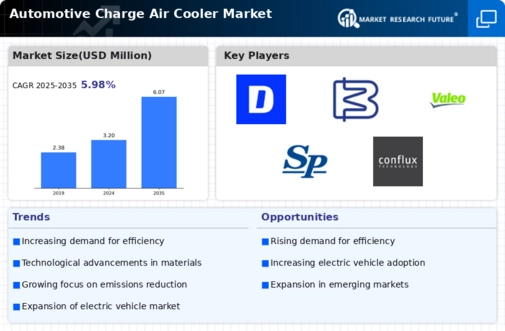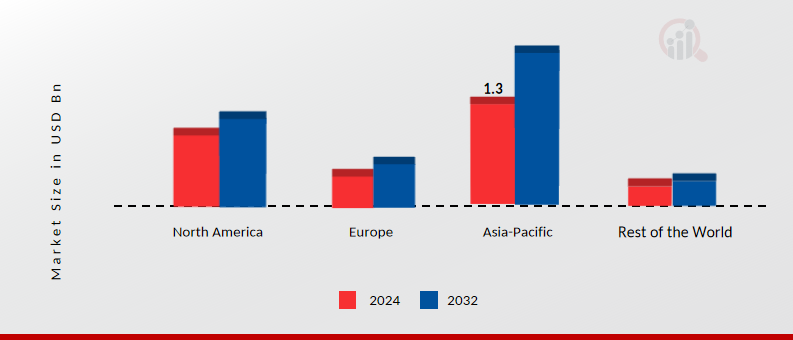Market Analysis
In-depth Analysis of Automotive Charge Air Cooler Market Industry Landscape
The Automotive Charge Air Cooler (CAC) market is subject to various market factors that collectively influence its growth and dynamics. One of the primary drivers propelling this market is the increasing focus on emission reduction and fuel efficiency in the automotive industry. Governments worldwide are implementing stringent emission standards, and automakers are adopting technologies like charge air coolers to comply with these regulations. By cooling the compressed air before it enters the engine, CACs improve combustion efficiency, leading to reduced emissions and improved fuel economy.
Technological advancements play a pivotal role in shaping the Automotive Charge Air Cooler market. Ongoing research and development efforts focus on enhancing the performance, durability, and efficiency of charge air coolers. Innovations such as compact designs, lightweight materials, and advanced heat exchanger technologies contribute to the market's evolution. Manufacturers strive to develop CACs that not only meet regulatory requirements but also provide automakers with solutions for optimizing engine performance.
Market factors are closely tied to the broader automotive industry and its growth trends. The rising demand for vehicles, particularly in emerging markets, influences the need for efficient and environmentally friendly technologies. As the automotive market evolves, with a shift towards electric vehicles and hybrid technologies, the role of charge air coolers in traditional internal combustion engines remains crucial for enhancing efficiency and meeting emission standards.
The economic environment also significantly impacts the Automotive Charge Air Cooler market. Economic conditions, consumer purchasing power, and the overall health of the automotive industry influence the production and sales of vehicles. During economic downturns, there may be a temporary slowdown in new vehicle purchases, impacting the demand for charge air coolers. Conversely, economic growth and a thriving automotive sector contribute to increased adoption of CACs.
Competitive dynamics and the presence of key market players are essential factors in influencing the Automotive Charge Air Cooler market. The industry is characterized by intense competition among manufacturers, each striving to differentiate themselves through product innovation, cost-effectiveness, and reliability. Strategic collaborations and partnerships contribute to market consolidation and the development of advanced charge air cooler solutions.
Environmental considerations and the global push towards sustainable transportation also shape the market. As the automotive industry seeks greener alternatives, charge air coolers play a role in improving the efficiency of traditional engines, reducing their environmental impact. This aligns with the broader trend of adopting technologies that contribute to the overall sustainability of the automotive sector.
The evolution of engine technologies and the electrification of vehicles are additional factors influencing the Automotive Charge Air Cooler market. While electric vehicles gain popularity, traditional internal combustion engines continue to dominate the market. Charge air coolers become instrumental in optimizing the performance of these engines, ensuring that they meet emission standards and provide fuel efficiency.
Supply chain dynamics and the availability of raw materials impact the Automotive Charge Air Cooler market. Manufacturers need to secure a stable supply of materials for producing heat exchangers and other components of charge air coolers. Any disruptions in the supply chain can affect production schedules and the availability of CACs for automotive applications.
In conclusion, the Automotive Charge Air Cooler market is influenced by a combination of regulatory, technological, economic, competitive, and environmental factors. As the automotive industry undergoes transformations and embraces sustainable practices, charge air coolers remain integral for enhancing the performance of traditional internal combustion engines. The market is expected to continue evolving as manufacturers focus on developing advanced CAC technologies to address the changing landscape of the automotive sector.









Leave a Comment